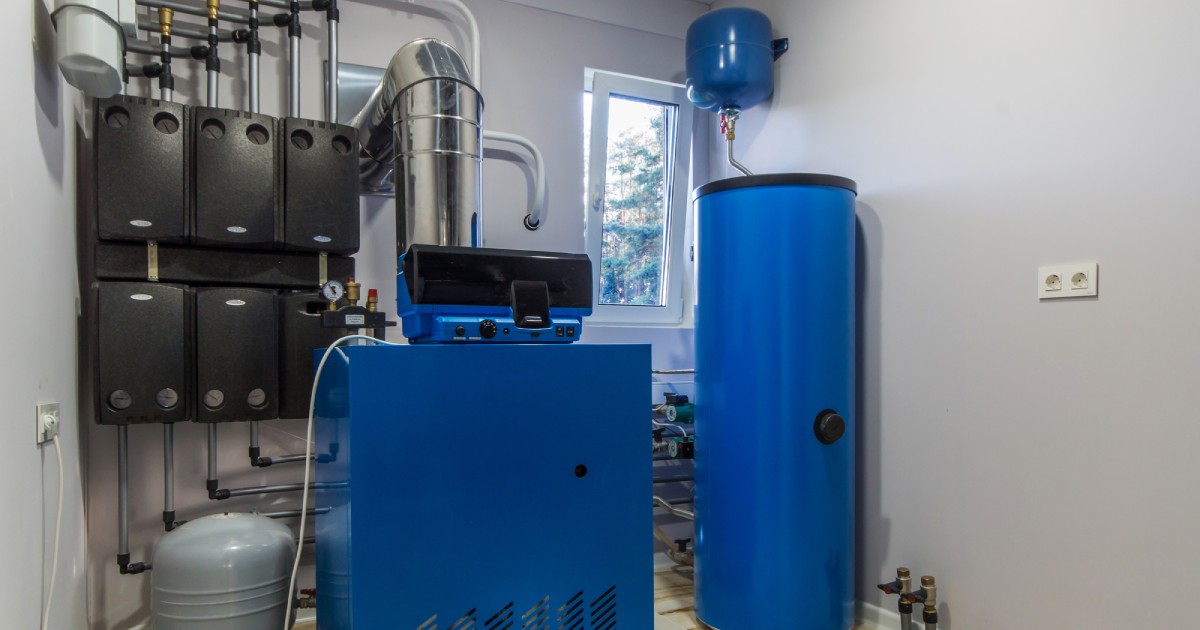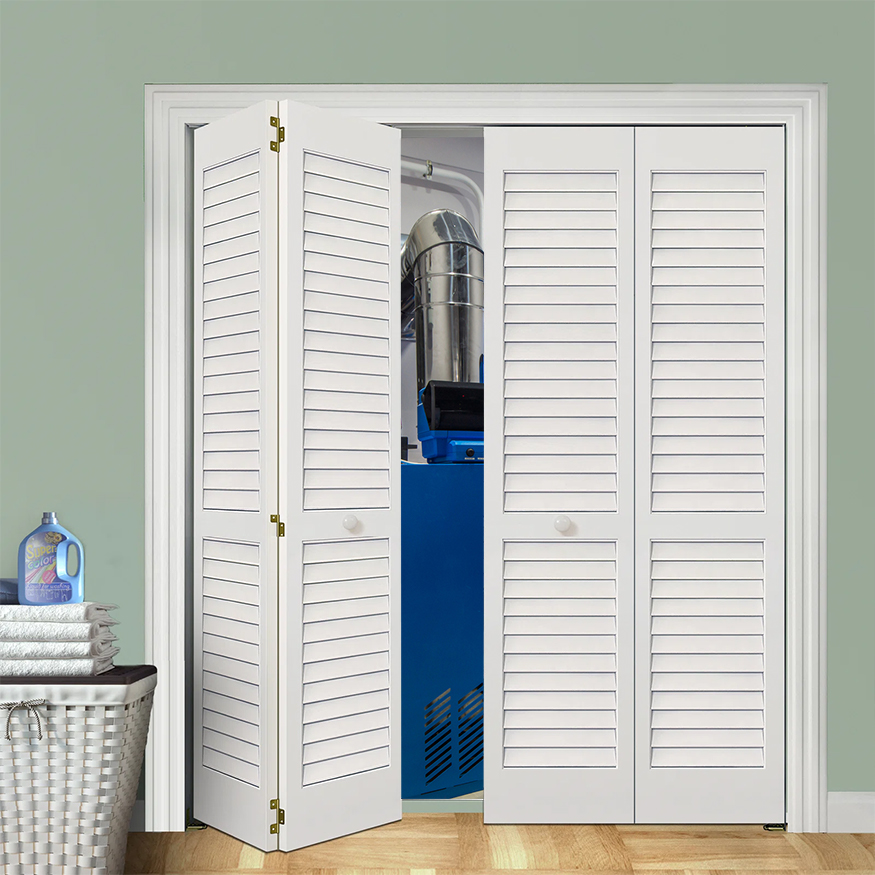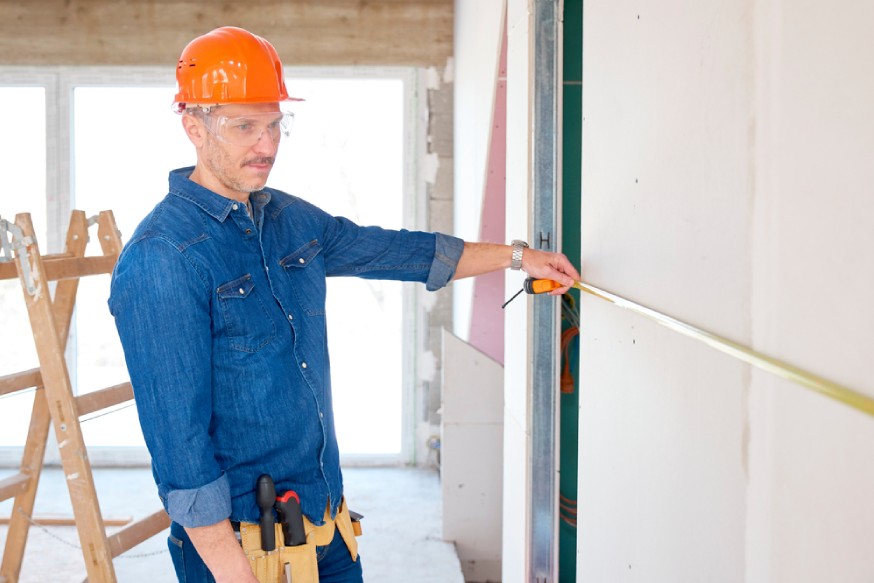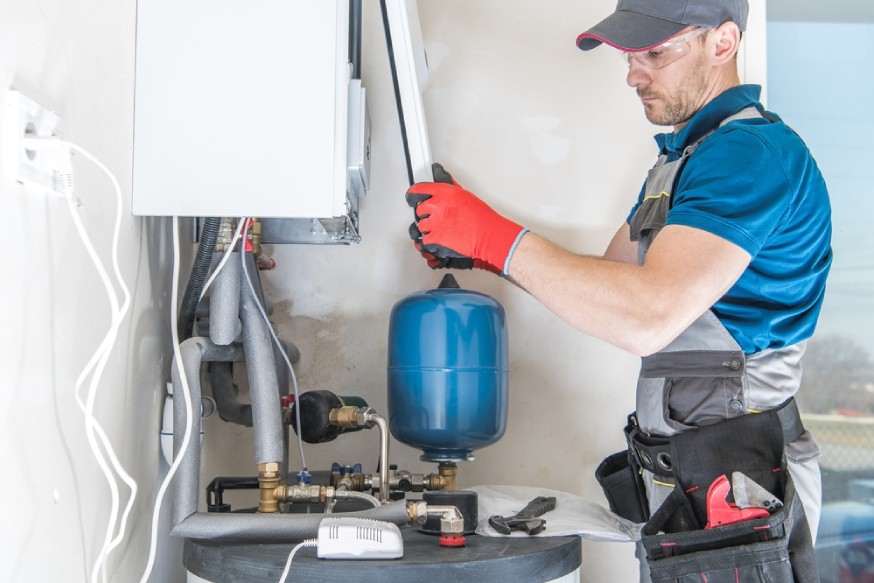A louvered vented door in the furnace room allows airflow, which the furnace needs for proper performance. It also maintains a more consistent temperature within the space. But does your home need one? The answer depends on whether or not your furnace requires venting.
To learn if you need a louvered vented door in your furnace room, continue reading!

What Is A Louvered Vented Door?
Louvered doors have panels that open to provide ample ventilation to a space. The general design is standard for doors adjoining rooms where airflow is necessary, but privacy is preferred.
For example, you might see a vented door in a laundry room as a way to provide ample ventilation for dehumidifying the space but still keep everything out of sight.

Does A Furnace Room Need A Louvered Door?
A louvered door is necessary for a furnace room. The vents in the door allow air to flow into the room, which is essential for temperature regulation and good air circulation the furnace needs for combustion. Inadequate airflow can lead to furnace short cycling.
Generally, you’ll need a louvered door if the units in the furnace room have atmospheric burners, as building code usually requires this. These burners aren’t sealed, so they draw combustion air from the room where the unit sits. So, if the room is sealed off from the rest of your home, the system cannot draw air continuously, which can become problematic quickly.
A louvered door is unnecessary if intake vents are connected to the outside. These vents remove dangerous exhaust, preventing it from accumulating within your home. It also provides plenty of fresh air for the combustion process.
That said, it’s typically a good idea to install this type of door as a safety and health precaution. If the room is sealed, you might not smell gas leaks until they become a significant problem. The gases could build up, potentially causing an explosion if left unchecked. Or, the room could become too hot as the units run, potentially causing a fire.
Note: A sealed furnace room can also trap moisture, creating the perfect warm, moist environment for mold and mildew to grow.
How Far Should The Door Be From The Furnace?

According to the majority of building codes, you usually need to place the door no closer than 24 inches from the front of the furnace.
If there isn’t enough room between the unit and the door, restricting front accessibility, your home might not pass inspection. On top of that, this could lead to poor ventilation, causing your unit to function less efficiently.
Your furnace will need at least 3 inches of space between the combustion air intake and the wall or door. Enough space between the two helps ensure the furnace gets the air it needs to function correctly and avoid overheating.
Note: Local building codes vary so much. It is best to check with your local government or HVAC technician to ensure you’re in compliance.
Can I Install A Furnace In A Closed Room?

You can install a furnace in a sealed room. However, you’ll need to adhere to local HVAC and building codes and the manufacturer’s instructions to ensure your installation is safe. If you’re unsure of the correct steps for your particular unit, reach out to the manufacturer or consult a licensed HVAC contractor.
For instance, some furnaces might not require a louvered door, but they need outdoor ventilation. Electric furnaces, on the other hand, electric furnaces don’t require ventilation because they don’t produce exhaust.
If the temperature is a concern, a louvered door isn’t a bad idea, as it’ll help keep the room at a consistent temperature.
Key Features Necessary In A Furnace Room
Whether your furnace room has an outdoor intake air vent or a louvered door for ample airflow, it’s essential to include key safety features in the space to help avoid catastrophic accidents. A few of the essentials include:
- Smoke detectors: This one is obvious, but it’s vital to ensure this space has its own smoke detector that works properly and is easily visible.
- Fire extinguishers: This goes hand-in-hand with smoke detectors and serves as an extra layer of protection in case a fire starts in the furnace room.
- Carbon monoxide detector: This device alerts you when there is abnormally high carbon monoxide in the air. Install it within five to twenty feet of the furnace, as placing it too close can lead to false detection.
- First aid kit: It doesn’t hurt to have an easily accessible first aid kit on hand, just to be on the safe side if an accident happens.
- Emergency contact numbers: If there’s a fire or gas leak, call 911 immediately. You should also have the emergency contact details of your HVAC contractor and local gas utility company.
Louvered Doors – To Add or Not to Add?
Although many furnace rooms require a louvered door, it isn’t the case for every unit. Electric furnaces or those with outdoor ventilation might not need louvered doors, although they can help maintain a more consistent temperature within the space.
Ultimately, every scenario is different, as different manufacturers and building codes may outline a different set of regulations.
So, consult the manufacturer or a licensed HVAC contractor if you’re unsure of the best setup for your furnace room. It’s better to be safe than sorry!